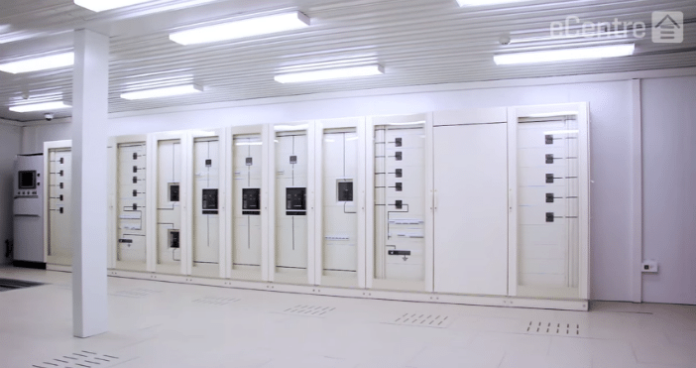How data center vendors and operators can maximize their facilities’ performance
Power usage effectiveness has been an important metric in the data center world for some time now. Companies running data center facilities typically strive for the lowest PUE they can achieve in order to reduce their operating costs and promote their green environmental credentials.
In an earlier article, my colleague Srikanth Murugan demonstrated how to cut through the marketing hype of competing claims about PUE performance. I would now like to take the subject a little further and focus on the economics of PUE and how data center vendors and operators can maximize their facilities’ performance.
Selecting the ideal location
Stable power grids, low energy prices and year-round access to “free cooling” drove a number of large Internet companies to build data centers in the Nordics where conventional wisdom dictated they could most easily achieve extremely low PUE values. Google in Finland and Facebook at The Node Pole in Sweden are two such examples. However, increasingly relaxed data center temperature and humidity ranges – as defined by ASHRAE – have now made low PUE deployments possible for a much wider range of geographical locations.
Cooling developments
A key area of technical development here are evaporative indirect free air cooling systems, now available from an increasing number of cooling technology suppliers. Using an evaporative cooler, dry outside air of 32 degrees can still be used to cool down air in the data center to 22 degrees, thus delivering meaningful savings from reduced electricity needed for powered cooling.
Even more exiting from an economic perspective is that for some locations this enables the use of outside air for cooling all year round, resulting in a lower maximum PUE and bringing significant capital expenditure savings.
First, since free air cooling can be used 12 months of the year, the mechanical DX cooling (“air conditioning”) systems used to handle warm days can be down-sized. In some cases it is possible to reduce the size of a DX back-up system from a facility’s full 100% cooling requirement to simply providing a top-up corresponding to as little as 25% of the total cooling needed. Additionally, a lower maximum PUE means that the maximum power consumed by the data center is lower, allowing the electrical power system to be scaled down, thus further reducing data center capex.
Emerging markets
Another, perhaps less debated aspect related to PUE is electricity cost. Grid prices vary significantly between countries, and can make or break the business case for investing in a data center with a low PUE. Further, in many emerging markets grid availability and stability is limited, resulting in data centers being powered by diesel generators for significant periods of time. This can range from a few hours per day to facilities being powered completely with diesel generator sets. In addition to fuel costs, generators are also liable to significant expenses for servicing and replacement parts. The table below shows how the yearly site power cost varies depending on electricity cost ($/kilowatt-hour) and data center PUE value for a data center with 1 MW IT load.
We can see that a reduction in PUE from 1.5 to 1.2 in a stable grid environment (10 cent/kWh) gives a meaningful yearly operating expenditure saving of over $260,000. For a diesel-operated data center (30 cents/kWh), the same level of opex saving is obtained by a much smaller reduction in PUE – from 1.5 to 1.4 for example – illustrating that the economics of PUE are even more important in emerging economies.
This is actually where it makes the best economic sense to consider different ways to reach a lower PUE, including hot/cold isle containments, higher data center temperature and high-efficiency modular power equipment. In areas with high electricity costs, free air cooling systems should also be considered even if they are effective only during parts of the year or at night when external temperatures are lower.
Trade-off between PUE and redundancy
Notably, higher data center redundancy (via a higher tier rating) can lead to a higher PUE because power losses in each piece of equipment increase due to lower utilization. With fully redundant power distribution (an “A” and a “B” side), the maximum equipment utilization at fully built out capacity is still only 50%. That said, modern modular power technology can provide high efficiency even at low utilization with some modern uninterruptible power supply systems able to maintain high efficiency at utilization as low as 25%. So by starting off with fewer UPS modules slotted in, the system can be kept at high efficiency from day one and in this way modular power technology can contribute to improved economy through both lower day one capex and lower operational cost.
Having built a large number of data center facilities across Africa, Asia, Europe and Latin America, we have learned that PUE-based investment business cases and their best technical approaches need to be adapted for each geographical location and data center type. A prefabricated data center building with controlled airflows is always a good starting point.
Tomas Rahkonen is CTO & VP ECentre of Flexenclosure, a designer and manufacturer of prefabricated data center buildings and intelligent power management systems for the ICT industry. Rahkonen has more than 15 years of experience from global positions in the ICT industry, including roles at Ericsson and at Sony Ericsson. He has filed several patents and been a member of the Sony Ericsson patent board. Rahkonen holds a Ph.D. in Industrial Control Systems from the KTH Royal Institute of Technology in Stockholm, Sweden.
Editor’s Note: The RCR Wireless News Reality Check section is where C-level executives and advisory firms from across the mobile industry share unique insights and experiences.


